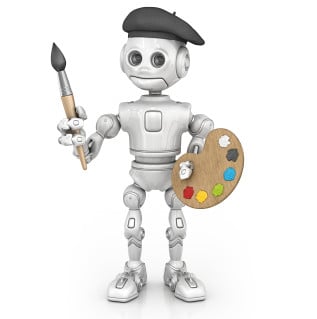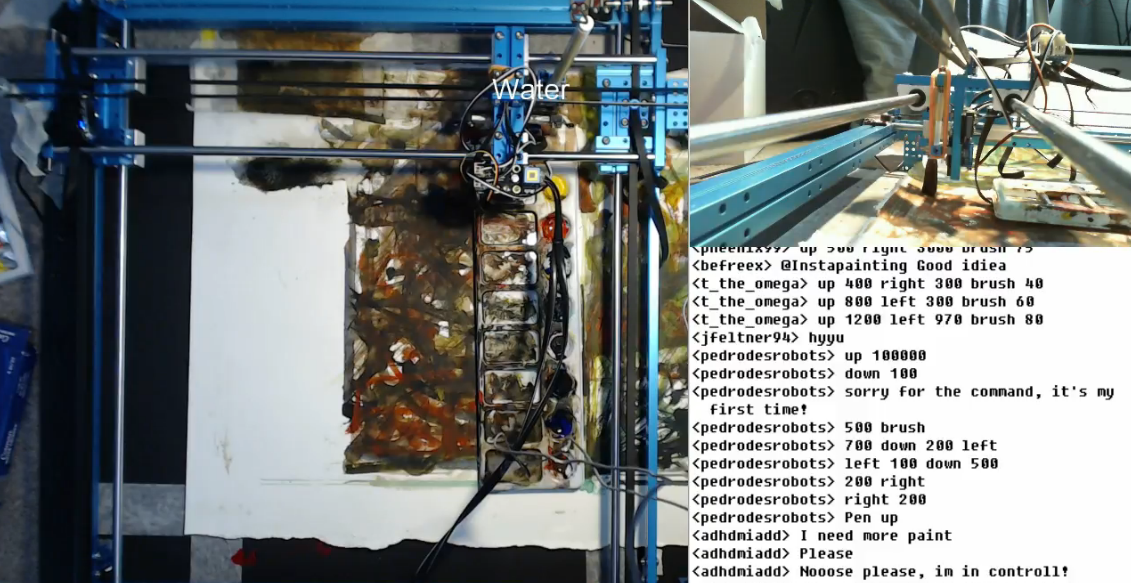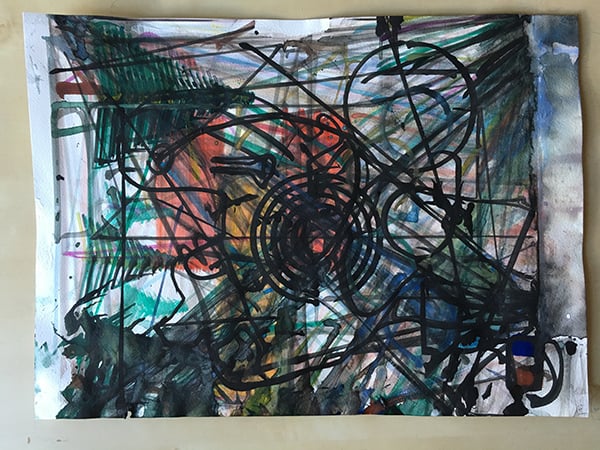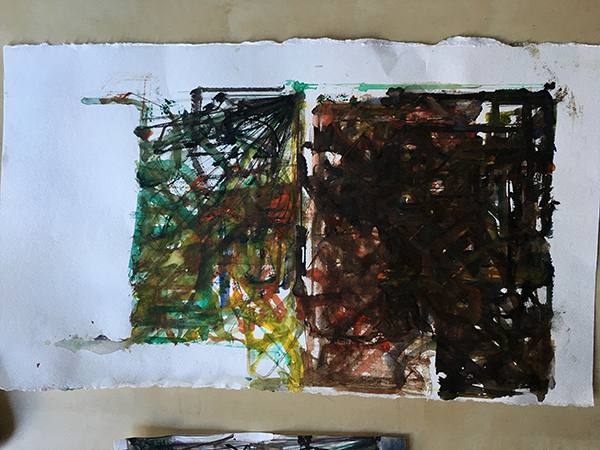Art World
Intrepid Robot Artist Creates 36-Hour Crowd-Sourced Painting
Could a robot be the next art star?

Could a robot be the next art star?

Sarah Cascone


The Instapainting robot at work.
Photo: courtesy Instapainting.
Artists beware: the machines are coming for you. This week on Twitch (everyone’s favorite Bob Ross streaming destination), a robot spent 36 hours painting on a live video feed, creating work based on instructions from users of the social media site and gaming platform.
While artists have been experimenting with painting robots for decades—Jean Tinguely began his “Métamatics” series, for instance, in the 1950s—a live, online crowd-sourced painting seems to be breaking new ground.
The project is the brainchild of Chris Chen, founder of Instapainting, a company that transforms customers’ photographs into paintings using human artists—not robots.

The first painting created by Twitch users with the Instapainting robot. Through the use of scripts, Twitch users were able to create recognizable objects.
Photo: courtesy Instapainting.
“It’s interesting and different because everyone’s been doing software stuff—this is something people can control in real life. It’s an art project,” he said of the robot in a statement.
This week’s Twitch feed was the project’s second iteration. The first time around, the robot was much harder to control, with users needing the tech know-how to write scripts to get it to paint specific shapes. Nevertheless, users were able to create several works of art, including a robotic version of Leonardo da Vinci’s Mona Lisa.

The second painting created by Twitch users with the Instapainting robot.
Photo: courtesy Instapainting.
This time out, laypeople only had to enter coordinates to direct the mechanical painter. In an e-mail to artnet News, Chen called the resulting painting “less organized,” noting that “the bots came back and tried to paint ‘dickbutts’ but the point and click interface made it easy for anyone to interfere. That’s probably why this looks more like a Jackson Pollock.”
“I was surprised it mostly ran without issues,” said Chen of the successful run. “It was a $250 machine slapped together with quickly written software, so running it for that long was an endurance test.”

An original painting and a replica created with the Instapainting robot.
Photo: courtesy Instapainting.
The product of the most recent session will be auctioned on eBay, with proceeds going to charity.
As the painting robot is perfected, Chen hopes to use it to create replicas of well-known works of art. He’s already had the robot replicate drawings created on a Wacom tablet. This technology could potentially replace Chinese art studios, which have been prolific in their output of faux-masterpieces.